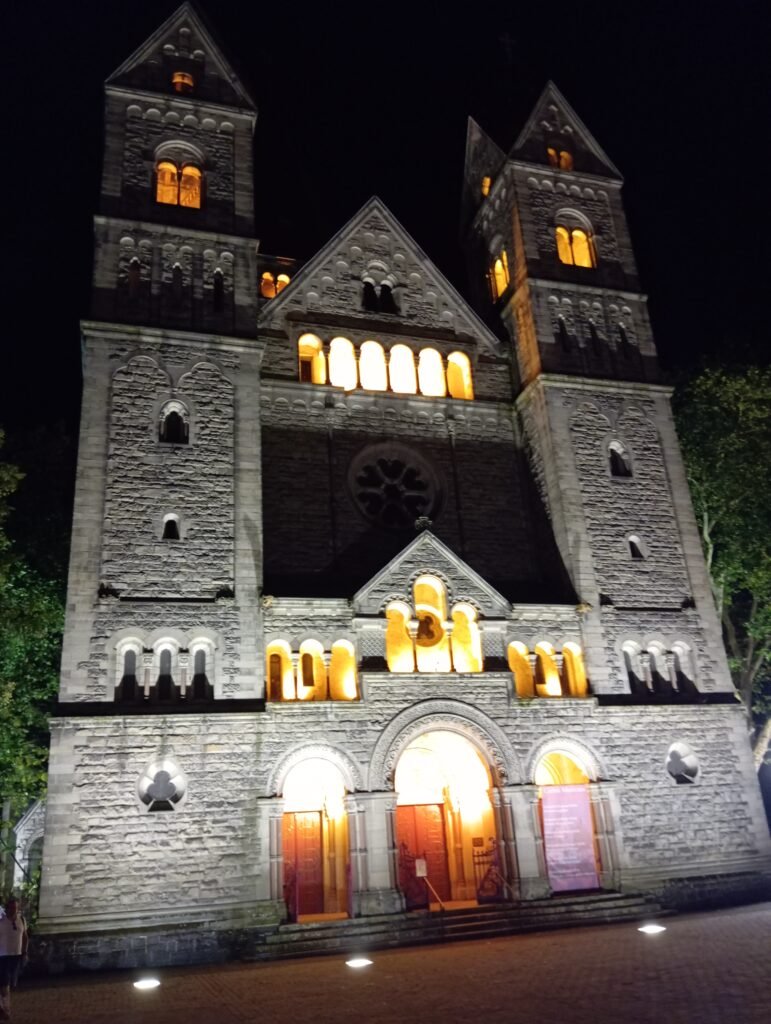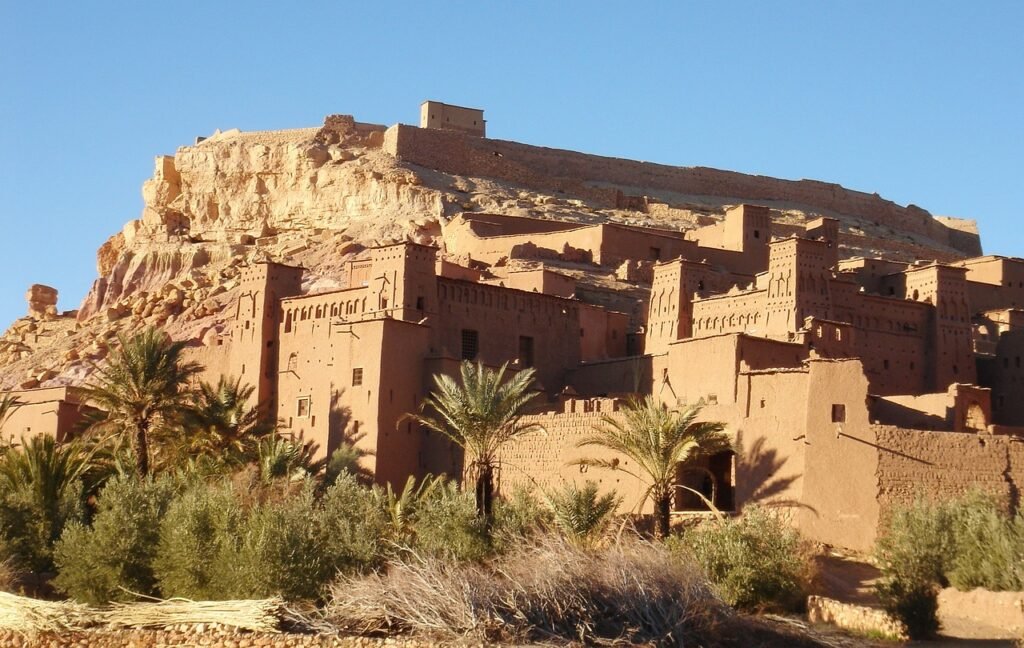Perched gracefully on the Île du Petit-Saulcy, surrounded by the gentle flow of the Moselle River, the Temple Neuf in Metz, France, stands as a striking blend of history, architecture, and cultural significance. This Protestant church, often referred to as the « New Temple, » is a true gem in the heart of Metz, offering visitors and locals alike a place of beauty, reflection, and community.
A Testament to Historical Shifts
The Temple Neuf was built between 1901 and 1904 during a unique period in Metz’s history, when the city was part of the German Empire following the Franco-Prussian War. Designed to serve the Protestant population, the church’s construction marked a significant cultural shift in a region traditionally dominated by Catholicism. The Romanesque Revival and Gothic Revival styles of the church are a nod to both religious traditions and the broader architectural trends of the era.
Its dark gray sandstone facade, with imposing spires and intricate details, immediately catches the eye. The contrast between the church’s bold architecture and the lush green surroundings creates a picturesque scene, particularly when viewed from across the Moselle. The reflection of the Temple Neuf in the river adds to its allure, making it a favorite subject for photographers and artists.

A Symbol of Peace and Unity
Beyond its architectural splendor, the Temple Neuf holds deep symbolic meaning. After World War I, when Metz was returned to France, the church continued to be a place of worship and community gathering, embodying the spirit of reconciliation in a region that has experienced its share of conflict. The proximity of Temple Neuf to the towering Metz Cathedral, a bastion of Catholicism, serves as a powerful reminder of the city’s religious and cultural diversity.
This coexistence is a testament to Metz’s ability to harmonize different traditions, making the city a vibrant tapestry of histories and cultures. The Temple Neuf, with its Protestant roots, stands as a beacon of this inclusivity, inviting all who visit to appreciate the richness of the region’s heritage.
A Cultural Hub in Modern Metz
Today, the Temple Neuf is more than just a church; it is a center of cultural life in Metz. Its excellent acoustics and serene interior make it an ideal venue for concerts, particularly classical music and organ performances, which draw audiences from across the region. The church also hosts exhibitions and events, further cementing its role as a cultural hub in the city.
Visitors are often captivated not only by the architectural beauty of the Temple Neuf but also by the tranquil atmosphere of its surroundings. The Île du Petit-Saulcy, with its green spaces and river views, offers a peaceful escape in the midst of the city, making it a perfect spot for contemplation or simply enjoying a quiet moment.

Conclusion
The Temple Neuf is more than just a historic building; it is a symbol of Metz’s complex identity and its ability to embrace both its past and present. Whether you are drawn to its stunning architecture, its cultural offerings, or its peaceful setting, the Temple Neuf is a must-visit destination in Metz. This architectural marvel, with its rich history and vibrant cultural life, stands as a reminder of the enduring power of unity and the beauty that emerges from a blend of diverse traditions.



Laisser un commentaire